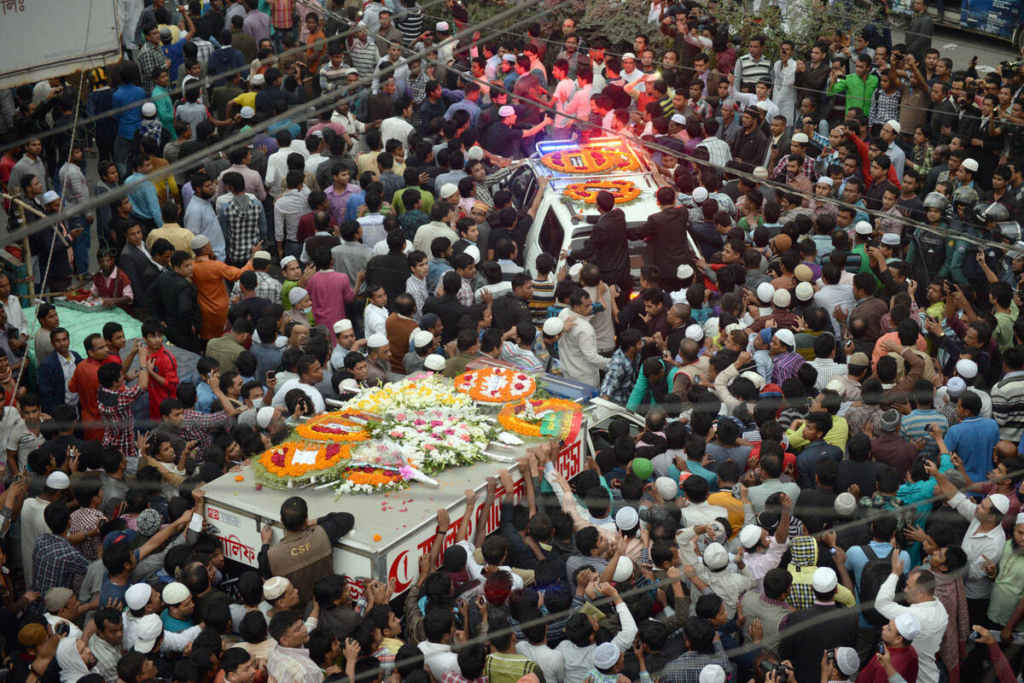It was a night in 2003. A cricket world cup was taking place in Africa. Yet, most of Bangladesh’s cricket fans, who were crazy about cricket, were in deep sleep. Bangladesh’s devastating performance in the world cup was the reason. Bangladesh could not win a single match in that tournament.
It was a wake-up call.
A series of events unfolded after the world cup. The hero of Sri Lanka’s 1996 world cup, Dav Whatmore, was appointed as the coach to fix the team. But the country desperately needed a pipeline of emerging cricketers to create ‘positive stress’ on the players of the national team. Besides, the cricketing infrastructures of the country were anything but good and the pay was lower than that of the global average. Cricket in Bangladesh was in a nascent state and the problems were huge.
As a sports enthusiast and organizer, Arafat Rahman tried to do as much as he could.
As the head of the Development Committee of the Bangladesh Cricket Board (BCB), he focused on creating a pipeline of new cricketers, crucial for the national team. On May 13, 2004, along with BCB officials, he introduced the High-Performance training programme with 24 emerging cricketers led by Australian coach Richard McInnes. These 24 cricketers included names like Aftab Ahmed who led us to the historic win against Australia, one of the best openers Shahriar Nafees Ahmed, country’s longest-serving wicketkeeper batter Mushfiqur Rahim, pacers like Shahadat Hossain, Talha Jubair and Nazmul Hossain, and spinners like Arafat Sunny and Enamul Haque Jr. Another interesting addition to the squad was Mashrafee Bin Mortaza who was struggling to return after suffering injuries. This changed the history of cricket in Bangladesh. After the head-start in 2004, more cricketers were groomed like Shakib Al Hasan and Farhad Reza. These are the cricketers who would serve the nation for the next decades and the BCB is yet to find their replacement.
Apart from building the pipeline, Bangladesh needed some solid cricket structure. Quite interestingly, Bangladesh had one of the weirdest systems back in the late 1990s and early 2000s, where both cricket and football, and in some cases, many other sports were played in one single stadium at the Bangabandhu National Stadium of Gulistan and the last time it got some renovation was in 1978 under President Ziaur Rahman. The BNP government did not change the name of the stadium quite gracefully.
In 2004, cricket decided to shift to a new stadium and by February 2005 massive renovation work began in the Mirpur stadium to convert it into a proper cricket ground, which was originally built for football. Eight pitches were developed, with the support of Australian experts. The drainage facility of the stadium after the renovation became “probably the best in the subcontinent” according to ESPN and it was so good that when the ground hosted its first Test match in May 2007, despite a heavy downpouring in the morning, within hours the ground was ready for the match.
However, this was not the only stadium for cricket that was built with Arafat Rahman’s Midas touch. If a curious reader checks the date of the first match played at the Bangaldesh’s cricket venues, he would find that it was in the year 2006, apart from the Sylhet’s one. To decentralize cricket, BCB with Arafat Rahman as its advisor, renovated four more stadiums in Khulna, Bogra, Narayanganj and Chattagram.
Besides, Arafat Rahman linked the corporates with cricket, to ensure the financial sustainability of the programs and better pay for the cricketers. Khondoker Jamil Uddin, a young businessman of that time recalled how Arafat Rahman approached him. “I was a simple businessman. It is Arafat Rahman Koko who brought me into the Cricket arena. He said, ‘Jamil vai, being a businessman you have a responsibility to contribute to the nation’. “
Soon, GrameenPhone-like brands became a sponsor of the national team.
An article published in The Daily Star read, “Arafat Rahman Koko, the former PM’s son, became the chairman of Development Committee of Cricket. He pumped in corporate funds to develop an under-19 squad that included Mohammed Ashraful, Aftab Ahmed, Shahriyar Nafees, Mashrafe Mortaza, Shakib Al Hasan, Shahadat Hossain Rajib, Syed Rasel and Mehrab Hossain jr.”
Almost two decades later, any review of the cricketing history would be incomplete without Arafat Rahman Koko. This is regretful for the nation, even the media, that quite unpleasantly they forgot one of the architects of Bangladesh’s emergence as a cricketing nation.


